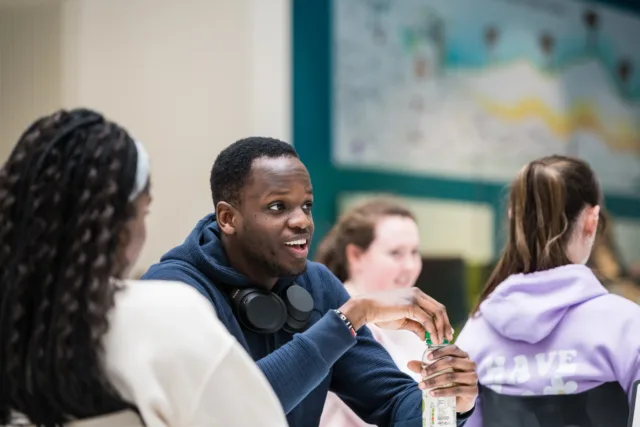Courses
Problem Solving
Let’s Play. Click on your game of choice and follow the instruction to play the game.
Boardwork Model
This is a method of organising board work in order to facilitate an understanding of problem-solving strategies. The board should be divided into 4 sections:
- Prerequisite knowledge
- Mathematical steps
- Narrative of the steps
- Additional sample problem
Encourage one student to fill out section 1 on the board. Then, encourage two students to simultaneously complete section 2 and 3 on the board.
Lastly, have another student complete the 4th section. Encourage student to use this model when studying outside of the PASS session.
Divide and Conquer
This strategy is designed to conquer a difficult reading assignment. The assignment should be divided up into meaningful sections and each student (or group) should be assigned one section.
Ask the students to read and summarise their section. After they all have read the material, have each student read aloud their summary.
Encourage students to ask questions and be prepared to emphasise areas students may have overlooked. Lastly, discuss the article as a whole.
Think-Pair-Share
This process requires three stages.
The students should be given a question, concept, or problem and then encouraged to think about it alone for a (short) designated time period.
Then they pair with another student and discuss what they found individually for an additional time period.
Lastly, the pairs join the large group and discuss their conclusions as a whole.
Paired Problem Solving
This strategy requires students to verbalise what they are thinking about as they read a passage or solve a problem.
Start by pairing the students into groups, one student should be the thinker/problem solver while the other student is the listener. The thinker must vocalise every step in the reasoning process and the listener must listen and understand every step the thinker is making.
The pair should be working together. Be sure the listener continually encourages the thinker to vocalise. The listener should also point out any errors.
After the problem is solved, the groups should rejoin the large group and share the problem solving process with the group.
Jigsaw
Similar to divide and conquer, this is a method of making the group as a whole dependent on subgroups.
A large group is divided into 2 or more groups (3-4/group) and each group is assigned a topic/task/step in problem etc. becoming an “expert”.
Students then move from their expert group to a new jigsaw group in which each student acts as the only expert in their specific topic and teaches the material to rest of group. Each new jigsaw group consists of 3-4 students prepared to teach subject to peers.
Collaborative Learning Techniques, Barkley, Cross, Major.
Grab Bag
This started out as a MLA grab bag where each student had to pull out a magazine, a paper, or a text book, etc. and reference it properly as if they were writing a theme paper.
Other leaders realised that this idea could be adapted to objects that have to be identified and explained in a Biology session or word problems on cards in a hat for Math sessions.
The options are bound only by your imagination. The intrigue, of course, is in not knowing which one you will pull out.
Peer Lessons
Select several problems over related material. Divide the students into 4-5 groups.
Give each group one problem and have them write out the solution, using their textbook and class notes, on a transparency or at the board. Have each group come up and explain the problem in as much detail as they can.
Have them show their thought processes and methods used in finding the solution. The PASS leader adds or corrects anything he/she feels is necessary.
Send A Problem
Can work in pairs or individually depending on size of group. Works well in Math and Chemistry after a new concept has been taught to check for understanding.
Generate a list of problems and assign each a different problem. Have students complete Step 1. After a minute have them pass their problem to the right and then complete Step 2. Continue process until all steps are complete.
Collaborative Learning Techniques; Barkley, Cross, Major.

